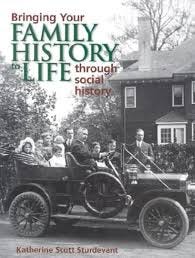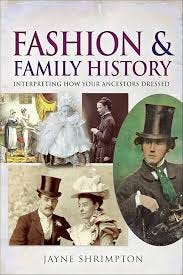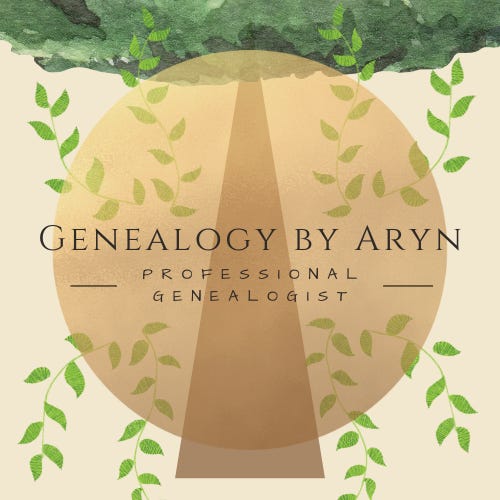Bringing Historical Writing to Life with Social History
Books Edition (including a FREE digital Social History Storytelling Workbook)
Family history is more than names and dates—it's about understanding the lives your ancestors lived. These details may feel challenging to find or simply lost in the passage of time. By learning social history, you can better understand the world they lived in, which will make it eaiser to creatue a backdrop to their life history. A better understanding of social history will provide the context needed to make both historical and family history stories richer and more meaningful.
What is Social History?
If you are unfamiliar with social history, it is a branch of history that focuses on the lived experiences of ordinary people, emphasizing social structures and interactions within society rather than state affairs.
Unlike traditional history, which concentrates on the idea of the “Great Man,” social history explores how social, economic, and cultural factors influence ordinary people's daily lives, occupations, and community dynamics.
This is why Social History and Family History go hand in hand. In the realm of genealogy, it helps us better understand the events that helped to shape our ancestors’ decisions and lives. In the realm of historical writing – but historical fiction and creative nonfiction – it allows us to use conjecture to create a more visceral world and to gain a deeper understanding of why people acted how they did.
This post will explore two books, both designed to help you, as a family history writer or in a more creative domain, better understand social history and how it can be incorporated into your writing.
The Books:
Bringing Your Family History to Life through Social History by Katherine Scott Sturdevant
In 2000, Katherine Scott Sturdevant published “Bringing Your Family History to Life through Social History.” This tome is the pioneer of social history meets family history. It helped to launch the concept and normalize the idea of using social history to add historical context to family history.
Available online via the Internet Archive, it is always a great place to start when beginning the journey to better understand the importance of understanding the complexity of your ancestor's lives.
With fictional historical writing, this title will help you recognize some of the outside forces that existed during the time period you have chosen to write in. An example is, in 1904, the New York Subway officially opened. Suddenly, people had access to jobs that were once out of reach. It also led to suburban development for similar reasons. If your ancestor, historical figure, or fictional character lived in Manhattan before the subway and after the subway, how do you think they would have reacted? How do you think it may have affected the choices they made?
Fashion and Family History by Jayne Shrimpton
This second book is centered around the lives of those living in Britain, but it is a fantastic example of how to better understand fashion in relation to our ancestors. It offers readers a detailed look at how clothing evolved alongside societal changes. It is still a fantastic resource to better understand the rise of industrialized fashion production, sewing machines, mass-produced textiles, and the care and preservation of garments.
is an outward reflection of changing thoughts, ideas, values, and beliefs. For example, in the 1920s, flapper dresses directly challenged the more demure and covered dresses of the decades before. They outwardly showed how women wanted more freedoms and coincided with the rise of the Suffragette movement.
If your ancestor, historical figure, or fictional character lived in the 1920s during the rise of the flapper dress, how do you think they would have reacted to it? Would they have shunned the idea of the shorter, more revealing attire, or would they have embraced it?
Remember: clothing reflected social class, culture, and daily life.
Add Depth to your Writing:
By exploring factors like social history (migration, religion, and economics) and the evolution of fashion, we begin to form a large picture of what a person may or may not have endured during their lives.
Better visualize the past:
While there are other books out there, like Katherine Scott Sturdevant's Bringing Your Family History to Life through Social History and Jayne Shrimpton's Fashion and Family History, there are also other ways to learn more about specific time periods.
Remember to use sources like newspapers and county histories to reconstruct the timeline surrounding your family history or historical piece and expand your understanding of historical context. Utilize sensory storytelling by embracing the five senses (touch, smell, taste, sight, and sound) with descriptions of fabrics, perfumes, aromas, flavors, and music. It allows readers to visualize their ancestors or fictional characters more vividly.
Practical Applications:
Books like “Bringing Your Family History to Life through Social History” and “Fashion and Family History” guide you through the interpretation of historical records, artifacts, and photographs, making them ideal for both genealogists seeking accuracy and writers aiming for authenticity in their storytelling.
Here are three books that use social history and historical context to produce a piece that embraces the art of literary writing and the importance of historical accuracy:
Ancestor Trouble by Maude Newton: Explores ancestry through themes like funeral rites, eugenics, and genealogy’s history, while addressing darker truths about family legacies such as slavery and racism.
The Yellow House by Sarah M. Broom: A memoir blending personal family history with the political and racial history of New Orleans, using a house as a central metaphor for broader societal issues
Bearwallow by Jeremy B. Jones: Combines family lore, regional myths, and Appalachian history to create a lyrical portrait of kinship with place over generations.
By weaving social history into your family tree, you can transform dry facts into vivid narratives that capture the essence of your ancestors' lives.
Follow this link to the FREE digital Social History Storytelling Workbook. This workbook was designed to help better understand the importance of Social History and includes prompts and worksheets to use in your writing.
Show some love… Give this post a like & a Restack!
Thank you for reading!! I'd love to get your thoughts to help me make the newsletter even more valuable and enjoyable for you. It'll only take a few minutes!
Did you miss it?
To Use or Not to Use AI
Writing is a deeply personal and rewarding craft. As literary artists, we pull from the life we’ve led and the experiences we’ve had. All these experiences will come into play whether you’re documenting family history or crafting fictional worlds.
The Three-Act Structure, Historical Fiction, and Genealogical Research
Historical fiction is a popular genre. From Taylor Jenkins Reid's The Seven Husbands of Evelyn Hugo to James Clavell's Shogun, the genre allows readers to get swept up in the past and for writers to explore historical moments in time while weaving them into compelling and engaging narratives.
Get S.M.A.R.T. with your Research
Exploring your family history can be daunting due to the sheer volume of records and information available online and offline. This is why a strategic and focused approach is imperative for successful genealogy research. Today, let's discuss the S.M.A.R.T. method—a powerful tool for organizing your research to uncover answers about your family's past that you may otherwise overlook.
Embracing the Writing Journey
If there is one thing I have found in common with most other writers, it is procrastination. It’s not that you don’t want to write. It’s not that you don’t have the stories in your head (or on slips of paper around the house, notes on your phone, and various half-used notebooks strewn around your bedroom). It’s that starting is hard.
Structuring Your Genealogical Research
Turning genealogical research into a compelling novel requires more than just gathering names and dates. It's about finding the stories hidden in historical records and shaping them into a narrative that engages readers. If you didn't have a chance to join me on February 27 with
*From Research to Novel is currently free a week after original publication. This is a limited time feature that will end July 1st 2025. To continue to receive full articles, digital downloads, and writing tutorials (coming soon) —
Subscribe today!
To learn more about Genealogy by Aryn - head over to GenealogybyAryn.com, stop by and say hello on Bluesky - Instagram - Facebook - YouTube
Be sure to check out my Etsy Shop and stop by my Genealogy Shop.
Looking to learn more about writing your family history? Check out From Research to Novel!
For more information about my Genealogical Services visit GenealogyByAryn.com or email me at aryn.genealogy@gmail.com. For more information on Writing Services - visit ASYounglesAuthor.com














